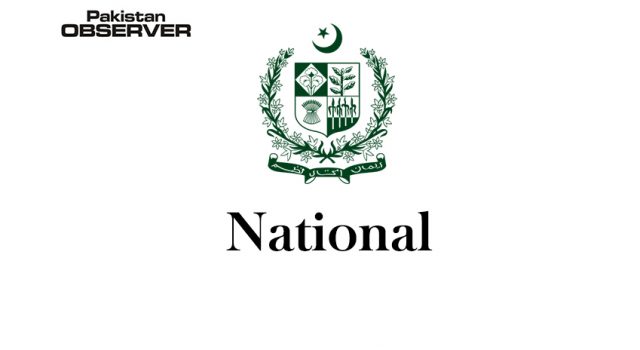Irfan Hussain Khan/Aqsa Nawaz
GOOD health is not something we can buy. However, it can be an extremely valuable savings account. Who defines health as a state of social well-being alongside complete physical and mental welfare not just the non-appearance of disability or ailment.
No doubt, Sehat Sahulat Program (SSP) is a PTI-led government’s flagship program for social health protection and beneficiaries would be provided with a health insurance card and two distinctive treatment packages would be offered to the citizens.
The first package will provide secondary care (Initial Coverage PKR 60,000 / Family / Year) and (Additional Coverage PKR 60,000/ Local Transportation Cost of PKR 1,000 (thrice per year) and Provision of transport to tertiary care hospitals.
Priority Treatment (Initial Coverage PKR 300,000 / Family / Year) and (Additional Coverage PKR 300,000/ Family) comprises of In-Patient Services (All Medical and Surgical Procedures).
A distinctive feature of the program is that both public and private healthcare amenities provisionally licensed by Punjab Healthcare Commission are permitted for empanelment in the scheme.
The program would cover one-day pre- and five-day post-hospitalization expenditures as well as medicines to all cadre of employee. Presently the SSP is underway in 96 districts of Pakistan.
On the basis of the BISP survey, the beneficiaries are nominated after the cross-verification process undertaken by the National Database and Registration Authority (NADRA) for member’s household family tree at a threshold gauge up to December 2019 across the country.
However, the program has virtually achieved the target of 60 percent enrolment from AJK, GB, and KPK merged districts. 97.5 percent satisfaction rate is disclosed. KPK government pledged to pay Rs. 2,849 per family annually to State Life Insurance.
KPK Health Minister Taimur Saleem Jhagra told that the government had allocated Rs 18 billion for this flagship program and it would be implemented across the KPK province for 100 percent population by January 31, 2021.
Meanwhile, the federal and provincial governments of KPK are paying over Rs 21 billion to SLI as an annual premium for the delivery of healthcare insurance to 8 million deserving families under the SSP.
For the Punjab province, the Punjab Health Initiative Management Company has been authorized by the administrative department.
In Punjab, More than 30 million families and over 200,000 families of Islamabad Capital Territory (ICT) will get access to SSP by the end of this year that would pay up to Rs 70 billion to SLI.
Furthermore, the government would also sell the land through Auqaf and Evacuee Trust property board on concessional rates to the private sector for the construction of health care infrastructure like hospitals, health care units, pharmacies etc. in the far-flung areas of villages and towns across the KPK and Punjab provinces.
Although, here the accountability and transparency aptitude is unsatisfactory. There are some imperative issues and suggestions that need to be deliberated.
On the one hand, it has created new employment opportunities for doctors, paramedical staff, and other genital workers by the establishment of new private hospital’s infrastructure.
Nevertheless, it created and led to free-riding in public hospitals and all the burdens were transferred from public hospitals to private hospitals.
I strongly recommend that we already have a public hospital infrastructure, so why spend more money on a new private hospital? In the long run, how will this health plan help improve welfare? We are a developing country.
How to deal with such out of pocket expenditures for the installation of new private hospitals? Everyone should have an open health package, which will accommodate the poor more.
Why should we put all the incidence of burden on the health department? The new medical insurance card policy only covers surgery-related cases, but in the context of Pakistan, most patients are related to doctors and mental illnesses? So how does this card help other patients who accounts for the majority? There are some joint policies between different departments, which will be more conducive to increase the welfare.
We are acquainted with one doctor, one LHV, two midwives, and two beds for every 30,000 to 40,000 people (each basic health unit), so why does the government dive for a new health plan? What will be the impending of the prevailing public hospitals? We already have good medical equipment in the public hospitals, so why should we think about new private hospitals for the execution of SSP? We have spent 2.9 % to 3.2 % on medical expenses, so how do we solve it via new health plan?.
I suggest that there should be public and private hospitals in the present medical administrative infrastructure, meanwhile establishment of new institutions will take longer and longer.
There should be a complete public hospital, 24/7. For example, health workers should ensure that they perform their duties in public hospitals.
After free, they will join public hospitals again in different proportions, which will definitely help to marginalize the people.
So people can’t move to private hospitals. According to diverse proportional schemes, every doctor should work in a public hospital after his/her due working hours.
The government should also expand the volume of health expenditures in the budgetary outlay’s Section.
—Mr Irfan Hussain Khan is a PhD Scholar at GCUF and Aqsa Nawaz is M Phil Scholar at UOS










